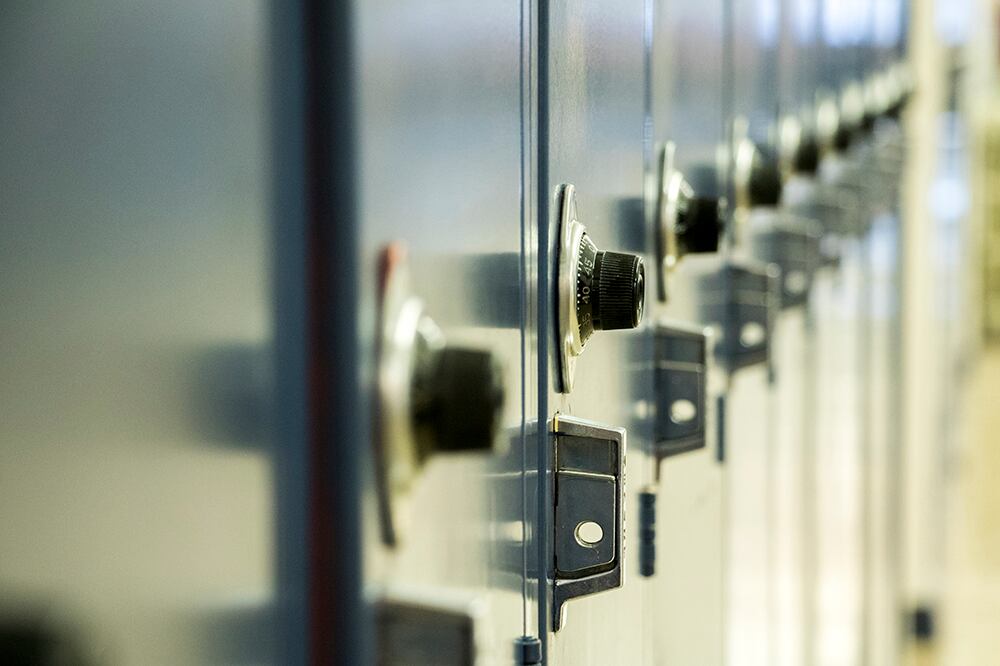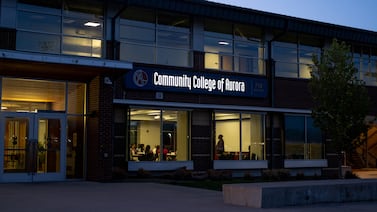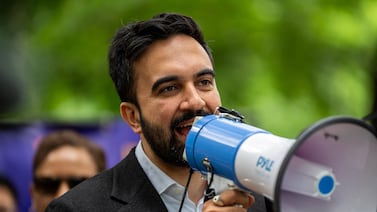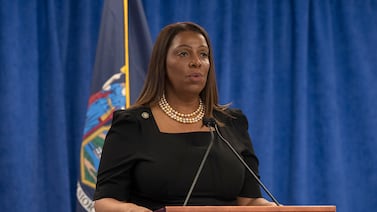More than 66,000 New York City fifth graders found out Tuesday where they got into middle school after going through an admissions process unlike any year.
For the first time, the city dropped academic screens at all middle schools. Integration advocates had long called for such changes, but Mayor Bill de Blasio hesitated until the pandemic forced his hand. He paused academic admissions screens at middle schools this year, as some of the measures used — including grades, test scores, attendance, student interviews, and auditions for performing arts programs — were upended since the coronavirus swept through the city last March.
Overall, the number of applicants dropped nearly 6%, echoing the larger trend of the school system losing students this year.
Removing screens moved the needle a bit when it came to economically disadvantaged students going to highly selective school programs, according to the admissions data. The city’s 50 most selective school programs offered an average of 48% of its seats to students from low-income families, up from 41% the previous year, according to Katie O’Hanlon, an education department spokesperson. Students learning English as a new language received an average 7% of offers at those programs, compared to 3% last year.
“Let’s not exaggerate this — these are modest improvements,” said Stefan Lallinger, a fellow at The Century Foundation think tank, who leads a nationwide initiative to encourage school integration. “But what it does indicate [is] that in many cases for some of the most selective schools out there, you have students and families who had wanted to attend certain schools and they were perceived off limits for them — and those families were able to take advantage of the new enrollment for this year.”
New York City is home to one of the most segregated school systems in the nation, due in part to its admissions practices. The roughly 40% of middle schools that screened students before this year’s pause switched to a lottery if they had more applicants than available seats. (“District priorities,” giving preference to students living within a certain district, remained in place.)
Lottery systems alone don’t tend to significantly boost diversity at schools, especially in districts that are not socioeconomically or racially diverse, Lallinger said. Integration is more successful in places with explicit goals for enrolling a more diverse group of students — such as the system in Brooklyn’s District 15 which three years ago dropped admissions screens for a lottery system giving preference to students from certain disadvantaged groups.
Additionally, while more families had access to schools they perceived as “off-limits,” many may have become accustomed to applying to the same set of schools, Lallinger said. They may not have had access to the information they needed to navigate changes in admissions — already a complicated and stressful process in New York City, but especially during a pandemic.
“You have families in New York City who have so many other preoccupations in a year of COVID-19, that seeking out detailed information on the way in which the admissions process has changed has not been on the top of the list,” Lallinger said.
Still, demographic changes for incoming sixth grade offers were more pronounced at some of the city’s most selective middle schools, according to the education department.
Students who are eligible for free and reduced priced lunch received 52% of offers at Manhattan’s Professional Performing Arts School — an increase of 30 percentage points. At Brooklyn’s Mark Twain intermediate School for the Gifted and Talented, 46% of offers went to low-income students, compared to 35% last year.
Children who are learning English as a new language received 16% of offers at Brooklyn’s coveted Christa McAuliffe School, compared to just 5% last year. Just 5% of English learners were offered spots at Brooklyn’s I.S. 98 Bay Academy last year, but that increased to 12% this year.
Families have been eagerly awaiting middle school offers. Parents grew frustrated when, in late April, some students’ offers were mistakenly posted to the city’s online portal, which were quickly pulled.
Of the 66,516 fifth-graders who applied for middle school, 89% percent of them received one of their top three choices, compared to 87% last year, according to education department figures.
Changes could be in store again. Just over 60% of students are still learning remotely full-time. Not only were these students not required to go into school buildings to take state tests this year, but also in-person students had to opt in to the exams. That may mean significantly fewer children are taking this year’s tests.
Middle school admissions to selective schools often rely on fourth grade state test scores, among other measures.
City officials are “evaluating and will continue to assess” what admissions should look like next year, said O’Hanlon.






